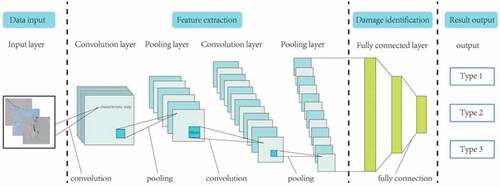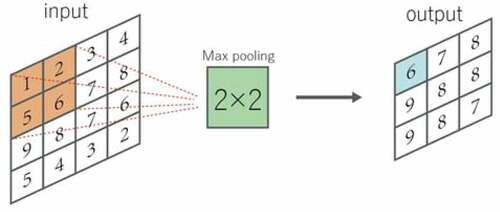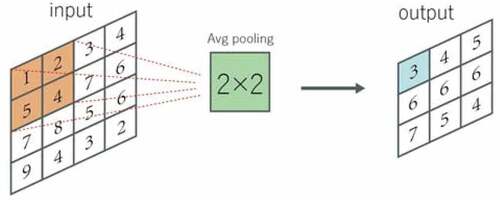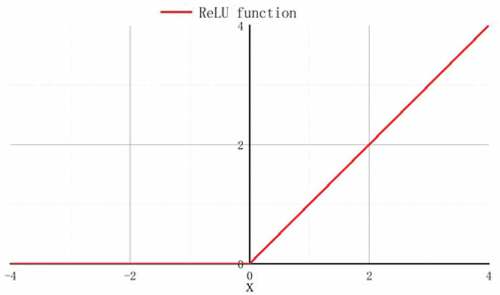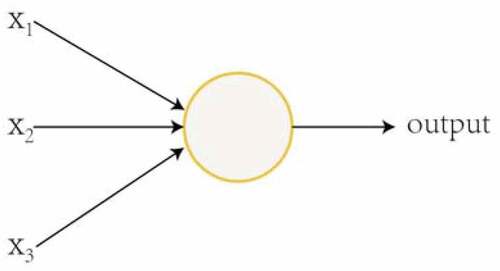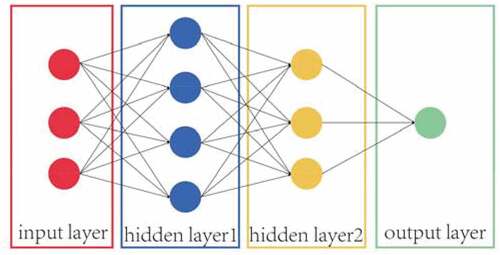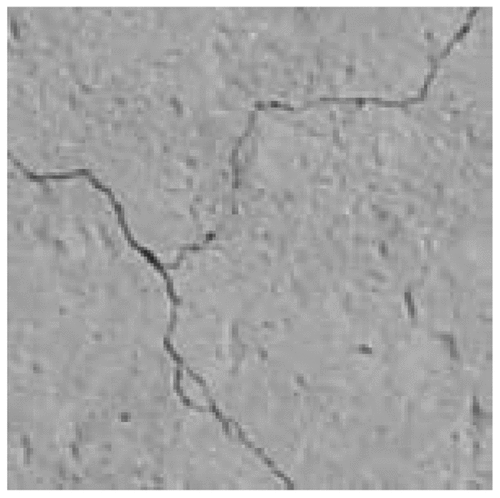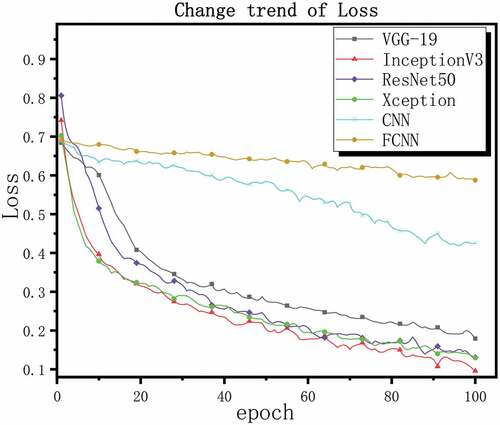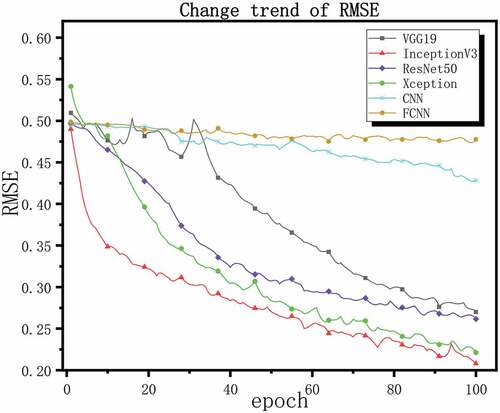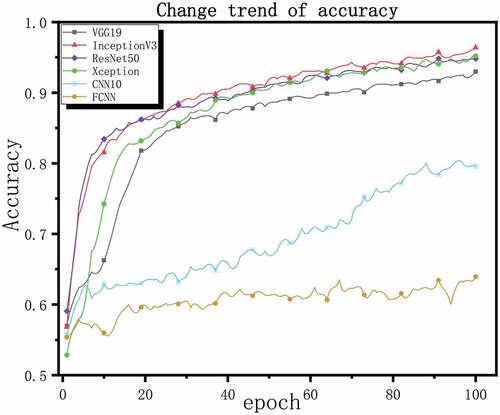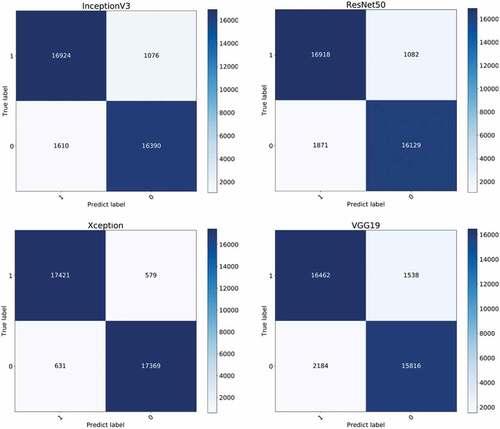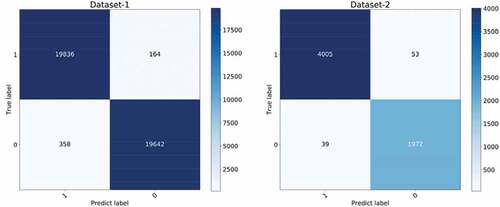Figures & data
Figure 2. An example of convolution computation, the step size is 1. The upper part is the convolution operation of multiple pictures, and the lower part is the visualization of one step in the convolution calculation.
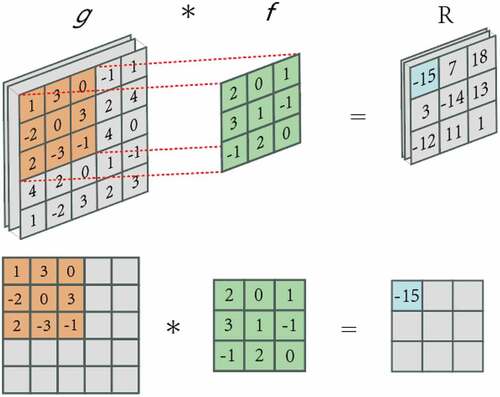
Figure 9. All above are cracked images. From top to bottom: unclear and hard to detect cracks; small cracks; obvious and clear cracks.
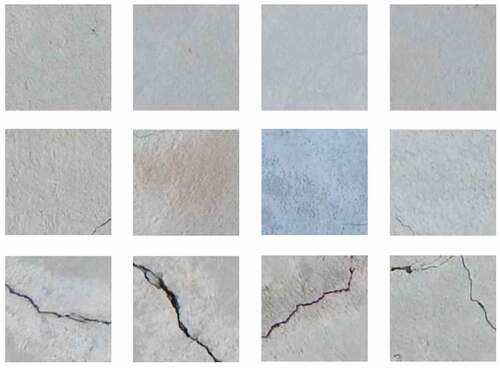
Figure 10. All above are uncracked images. The upper part are smooth uncracked images, the lower part are rough uncracked images.
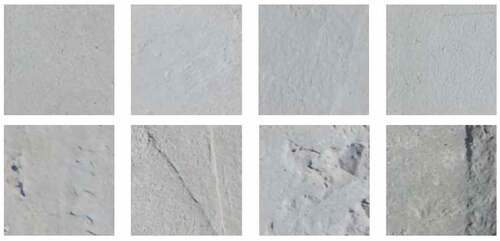
Table 1. Number of images before augmentation
Table 2. Number of images after enhancement
Table 4. Loss, RMSE and accuracy of cross-validation results for each prediction model
Table 5. Results of precision, recall and F1-score
Table 6. Precision, recall and F1-score of cross-datasets research

